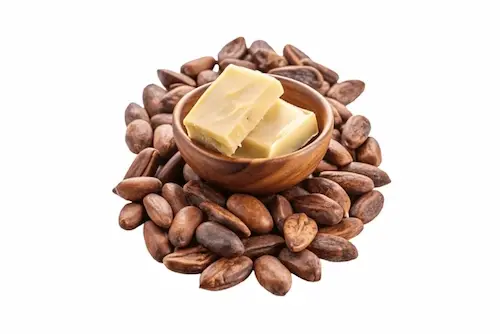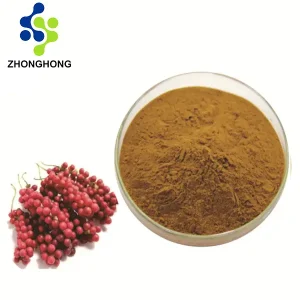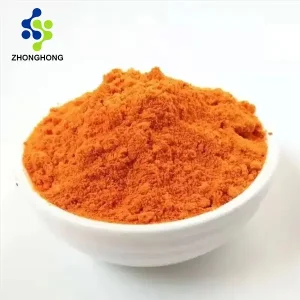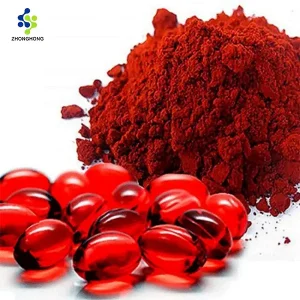The Final Information to Cocoa Butter: Nature’s Pores and skin-Loving Emollient & Its Vegan Standing | Supplier & Manufacturer
1. What is Cocoa Butter? Is Cocoa Butter Vegan?
Cocoa butter, scientifically generally known as Theobroma oil, is the pure, edible fats extracted from cocoa beans (Theobroma cacao L.). It is prized for its wealthy, chocolatey aroma, stable texture at room temperature, and distinctive skin-conditioning properties.
Is Cocoa Butter Vegan? Sure, pure cocoa butter is inherently vegan. It’s derived solely from the fruit (beans) of the cacao tree via mechanical urgent, a course of free from animal merchandise. Nevertheless, vigilance is required:
-
Pure Cocoa Butter: Strictly plant-based.
-
Potential Non-Vegan Components: Some industrial skincare or meals merchandise containing cocoa butter would possibly embrace non-vegan components like milk derivatives, honey, beeswax, or lanolin.
-
Processing Aids: Whereas uncommon, theoretically doable (although extremely unusual in trendy, respected extraction). At all times examine product labels for certifications like Vegan Society or search for “100% Pure Cocoa Butter”.
2. Product Supply, Chemical Properties & Identifiers

-
Supply: Extracted from fermented, roasted, dried, and cracked cocoa beans (nibs) through hydraulic urgent or expeller urgent. A key co-product of chocolate manufacturing.
-
Chemical Nature: A fancy combination of triglycerides (fat), predominantly composed of saturated (≈60%) and monounsaturated (≈35%) fatty acids. Key fatty acids embrace:
-
Oleic Acid (C18:1)
-
Stearic Acid (C18:0)
-
Palmitic Acid (C16:0)
-
Linoleic Acid (C18:2) – Minor element
-
-
Key Physico-Chemical Properties:
-
Appearance: Pale yellow to ivory, stable at room temperature (<~25°C / 77°F).
-
Melting Level: Roughly 34-38°C (93-100°F) – melts barely under physique temperature.
-
Saponification Worth: 188-200 mg KOH/g
-
Iodine Worth: 33-42 g I₂/100g
-
Refractive Index (40°C): ≈1.456 – 1.458
-
Particular Gravity (100/25°C): ≈0.858 – 0.864
-
-
Customary Identifiers:
-
CAS Registry Quantity: 8002-31-1
-
EC Quantity (EINECS): 232-296-1
-
Molecular Components (MF): Represents a fancy combination; usually listed as the main triglycerides (e.g., POS – Palmitic-Oleic-Stearin).
-
Molecular Weight (MW): Not relevant for a pure fats combination; common molecular weight is often round 850-900 g/mol.
-
3. Benefits, Efficiency, Consumption & Security
-
What is the “Greatest”? Highest Content? The “finest” cocoa butter will depend on software:
-
Uncooked/Unrefined: Highest in pure antioxidants (polyphenols, tocopherols), retains attribute aroma/taste. Most popular for premium skincare and area of interest culinary makes use of.
-
Refined/Deodorized: Impartial odor/taste, lighter coloration, longer shelf-life. Most popular for cosmetics requiring scent neutrality and large-scale meals manufacturing.
-
Highest Content Merchandise: Search for “100% Pure Cocoa Butter” or “Cocoa Butter Paste”. Cocoa powder itself accommodates solely residual fats (10-12%). Cocoa mass/liquor accommodates ≈50-55% cocoa butter. Direct cocoa butter presents the purest, highest focus.
-
-
Well being & Pores and skin Benefits:
-
Pores and skin: Distinctive emollient and occlusive agent. Deeply moisturizes, improves pores and skin elasticity, helps pores and skin barrier restore, soothes dryness/chapping (lips, elbows, ft), might assist cut back look of scars/stretch marks over time.
-
Antioxidant Properties: Incorporates pure antioxidants (tocopherols, polyphenols – although diminished in refined grades) that fight free radicals.
-
Wound Therapeutic Assist: Occlusive nature creates a protecting barrier, probably aiding minor wound therapeutic environments.
-
Culinary: Gives texture (mouthfeel, snap) in chocolate, confectionery, and baked items. Supply of stearic acid.
-
-
Each day Consumption (Culinary): Primarily used topically. As a meals fats, consumption is a part of general dietary fats consumption. No particular RDI. Moderation is vital inside a balanced food regimen. EFSA recommends complete fats consumption of 20-35% of complete power.
-
Precautions & Facet Results:
-
Comedogenicity: Reasonably comedogenic (pore-clogging). Might trigger zits breakouts in acne-prone people, particularly on the face.
-
Allergic reactions: Uncommon, however doable allergy to cocoa parts. Patch take a look at earlier than widespread topical use.
-
Purity: Guarantee food-grade for ingestion. Beauty-grade ought to meet security requirements (heavy metals, microbes).
-
Melting: Low melting level means it could liquefy in heat environments. Retailer appropriately.
-
4. Featured Supplier: Shaanxi Zhonghong Investment Technology Co., Ltd. – Your Supply for Premium Plant Extracts
Shaanxi Zhonghong Investment Technology Co., Ltd. stands as a number one high-tech enterprise on the forefront of bioactive compound innovation. For 28 years, we now have built-in agile R&D, collaborative innovation, built-in manufacturing, and world advertising to serve the demanding wants of the chemical, materials science, and life science industries.
-
Core Experience: Specializing within the superior extraction, isolation, and purification of efficacious plant-derived compounds. Our portfolio encompasses:
-
Standardized Natural Plant Extracts
-
Excessive-Purity Beauty Actives & Useful Components
-
Pharmaceutical Intermediates & Nutraceutical Compounds
-
Natural Plant Pigments (Colours)
-
Natural Plant Sweeteners
-
-
Scientific Management (Analysis Limitations):
-
Joint Innovation: Strategic partnerships with 5 elite universities establishing devoted joint laboratories.
-
IP Portfolio: Possession of 20+ proprietary patents and entry to a globally unique compound library.
-
-
Manufacturing Excellence (Tools Management):
-
Reducing-Edge Analytics: Geared up with HPLC (Excessive-Efficiency Liquid Chromatography), Superconducting NMR (Nuclear Magnetic Resonance) spectrometers, and different international-grade analytical instrumentation.
-
Unmatched Purity: Our rigorous high quality management protocols guarantee purity requirements exceeding business norms by over 20%.
-
-
International Attain: A longtime worldwide provide community serving purchasers throughout Asia, Europe, and the Americas (80+ international locations), offering custom-made ingredient options to multinational pharmaceutical firms, analysis establishments, and main beauty/formulation homes.
5. In-Depth Product Specs (Cocoa Butter – Consultant)
| Class | Mission Name | Specification (Restrict) | Take a look at Methodology |
|---|---|---|---|
| Pesticides | Acephate | ≤ 0.05 mg/kg | GC-MS / LC-MS/MS |
| Chlorpyrifos | ≤ 0.05 mg/kg | GC-MS / LC-MS/MS | |
| Cypermethrin | ≤ 0.05 mg/kg | GC-MS / LC-MS/MS | |
| DDTs (Sum) | ≤ 0.05 mg/kg | GC-MS / LC-MS/MS | |
| Glyphosate | ≤ 0.10 mg/kg | LC-MS/MS | |
| Heavy Metals | Lead (Pb) | ≤ 0.10 mg/kg | ICP-MS / AAS |
| Arsenic (As) | ≤ 0.50 mg/kg | ICP-MS / HG-AAS | |
| Cadmium (Cd) | ≤ 0.10 mg/kg | ICP-MS / AAS | |
| Mercury (Hg) | ≤ 0.10 mg/kg | CV-AAS / ICP-MS | |
| Microbiology | Complete Plate Rely (TPC) | ≤ 1,000 CFU/g | USP <61> / EP 2.6.12 |
| Yeast & Mould | ≤ 100 CFU/g | USP <61> / EP 2.6.12 | |
| Escherichia coli | Absent in 10g | USP <62> / EP 2.6.13 | |
| Salmonella spp. | Absent in 25g | USP <62> / ISO 6579 | |
| Staphylococcus aureus | Absent in 1g | USP <62> / EP 2.6.13 | |
| Pseudomonas aeruginosa | Absent in 1g | USP <62> / EP 2.6.13 |
(Observe: Specs are illustrative and based mostly on business requirements for meals/beauty grade. Shaanxi Zhonghong employs stricter inside limits.)
6. Manufacturing Circulate (Simplified)
-
Sourcing: Premium cocoa beans sourced from licensed origins.
-
Cleansing & Sorting: Removing of overseas supplies and faulty beans.
-
Roasting: Develops taste/aroma, loosens shells, reduces moisture.
-
Winnowing: Cracking beans and separating shells (husks) from nibs.
-
Alkalization (Elective/Dutching): Remedy with alkali to change coloration/taste (extra widespread for powder).
-
Nib Grinding: Grinding nibs into cocoa liquor/mass (≈50-55% fats).
-
Urgent: Hydraulic urgent of the cocoa liquor to separate cocoa butter from the cocoa cake (which turns into powder).
-
Filtration: Removing of any effective solids from the pressed butter.
-
Deodorization (Elective – Refining): Steam therapy below vacuum to take away unstable compounds, leading to impartial odor/taste and lighter coloration.
-
Tempering & Solidification: Managed cooling to stabilize crystal construction for constant texture and melting profile.
-
High quality Management: Rigorous testing in opposition to specs (see desk above).
-
Packaging: Meals-grade or cosmetic-grade packaging below managed situations.
7. Application Scenarios
-
Cosmetics & Skincare: Lotions, lotions, lip balms, soaps, physique butters, hair conditioners, therapeutic massage bars, stretch mark lotions (emollient, moisturizer, barrier protector).
-
Prescription drugs: Ointment bases, suppository bases (excipient).
-
Meals Trade: Chocolate manufacturing (supplies snap & mouthfeel), confectionery fillings, bakery merchandise, dairy alternate options.
-
Aromatherapy: Base for stable fragrance carriers or therapeutic massage oils.
8. High quality Management
Shaanxi Zhonghong implements a complete, multi-tiered High quality Administration System (QMS) adhering to cGMP (present Good Manufacturing Practices), ISO requirements, and stringent customer-specific protocols for Cocoa Butter manufacturing. Identification, purity, efficiency, and security are paramount. Identification affirmation makes use of Fourier Rework Infrared Spectroscopy (FTIR) fingerprinting in opposition to reference requirements and fatty acid profile evaluation through GC-FID (Fuel Chromatography-Flame Ionization Detection). Purity evaluation is rigorous: Residual Solvents are quantified utilizing Headspace GC-MS; Peroxide Worth (PV) and Acid Worth (AV) are decided titrimetrically to make sure freshness and absence of extreme hydrolysis. Heavy Metallic contamination is screened and quantified with extremely delicate Inductively Coupled Plasma Mass Spectrometry (ICP-MS). Pesticide Residue evaluation employs refined LC-MS/MS (Liquid Chromatography-Tandem Mass Spectrometry) strategies able to detecting hint ranges (ppb) of tons of of agrochemicals. Microbiological security is ensured via validated strategies (USP/EP) for Complete Cardio Microbial Rely (TAMC), Complete Yeast and Mould Rely (TYMC), and absence testing for specified pathogens (Salmonella, E. coli, S. aureus, P. aeruginosa). Bodily parameters like melting level (DSC – Differential Scanning Calorimetry), coloration (Lovibond/spectrophotometric), and refractive index are additionally monitored. Stability research (accelerated and real-time) below ICH tips assure shelf-life and efficiency consistency. Batch traceability is maintained all through the availability chain. Our devoted QC laboratory, geared up with HPLC, GC, ICP-MS, and microbiological suites, coupled with skilled personnel, delivers certificates of research (CoA) offering full transparency and compliance.
9. Packaging & Logistics
-
Customary Packaging: Meals-grade 25kg multi-layered kraft paper baggage with internal PE liner; Beauty-grade 180kg food-grade drums. Customized packaging (smaller portions, vacuum-sealed blocks, flakes) accessible.
-
Storage: Retailer in a cool (15-20°C), dry, darkish place away from sturdy odors. Keep away from extreme warmth (>35°C) to forestall melting and high quality degradation.
-
Shelf Life: Sometimes 2-5 years when saved correctly (longer for refined grades). Discuss with particular CoA.
-
Logistics: International transport through air, sea, or land freight. Temperature-controlled transport beneficial for warm climates.
10. Well being Efficacy & Mechanism Analysis, Industrial Purposes & Innovation
-
Mechanisms: Cocoa butter’s efficacy stems from its triglyceride composition. Oleic acid enhances pores and skin penetration, stearic and palmitic acids present wonderful occlusivity, forming a hydrophobic barrier lowering Transepidermal Water Loss (TEWL) and enhancing pores and skin hydration. Minor parts like polyphenols (extra prevalent in unrefined) supply antioxidant and potential anti-inflammatory results.
-
Industrial Purposes: Past chocolate, it is important in lipophilic drug supply techniques (suppositories, ointments) on account of its melting level and launch profile. Utilized in specialty lubricants and candle making.
-
Innovation: Analysis explores fractionated cocoa butter for particular melting profiles, encapsulation of bioactive compounds inside its matrix, and sustainable sourcing/traceability through blockchain. Upcycling cocoa butter by-products is gaining traction. Shaanxi Zhonghong focuses on inexperienced extraction applied sciences (e.g., subcritical fluid extraction optimization) and enhancing bioactive retention in much less refined grades.
11. Analysis Frontiers & Challenges
-
Frontiers: Quantifying particular bioactive minor parts (past tocopherols) and their dermal bioavailability/mechanisms. Creating cocoa butter-based nanostructured lipid carriers (NLCs) for enhanced topical drug/beauty supply. Exploring synergistic results with different botanical actives. Genetic optimization of cacao for larger butter yield or distinctive fatty acid profiles.
-
Challenges: Guaranteeing sustainable cacao farming practices amidst local weather change and financial pressures. Sustaining constant high quality of pure product regardless of bean origin variability. Value-effectiveness of refined processing for area of interest functions. Addressing comedogenicity via formulation science. Regulatory harmonization for complicated pure components globally.
12. FAQ (Regularly Requested Questions)
-
Q1: Is cocoa butter comedogenic?
-
A: Sure, it’s thought of reasonably comedogenic (pore-clotting). It might trigger breakouts in acne-prone people, particularly on the face. Use on the physique is mostly higher tolerated. Patch testing is beneficial.
-
-
Q2: What is the distinction between uncooked/unrefined and refined cocoa butter?
-
A: Uncooked/Unrefined: Natural chocolate aroma/taste, yellowish coloration, larger antioxidant content material. Refined/Deodorized: Impartial odor/taste, lighter/white coloration, longer shelf-life, usually most popular in cosmetics needing scent neutrality or delicate functions.
-
-
Q3: Can I eat cocoa butter?
-
A: Sure, food-grade cocoa butter is edible and utilized in chocolate, confectionery, and baking. Eat it as a part of a balanced food regimen, conscious of general fats consumption. Don’t ingest cosmetic-grade until explicitly labeled food-safe.
-
-
This autumn: How do I soften cocoa butter?
-
A: Use a double boiler or microwave in brief bursts (15-30 sec) at low/medium energy, stirring continuously. Keep away from overheating (>50°C) to forestall burning and lack of helpful compounds.
-
-
Q5: Does cocoa butter actually cut back stretch marks?
-
A: Whereas it will not eradicate them, its deep moisturizing and emollient properties can enhance pores and skin elasticity and hydration, probably lowering the look of stretch marks and stopping new ones from changing into extreme when used repeatedly, particularly throughout being pregnant/weight adjustments. It really works finest as a preventative and supportive therapy.
-
-
Q6: How ought to I retailer cocoa butter?
-
A: Retailer in an hermetic container in a cool (15-20°C), darkish, dry place. Refrigeration can lengthen shelf life however might trigger blooming (innocent floor whitening). Keep away from warmth and humidity.
-
-
Q7: The place can I purchase high-quality, pure cocoa butter?
-
A: Contact Shaanxi Zhonghong Investment Technology Co., Ltd., a number one world supplier of premium plant extracts together with Cocoa Butter.
-
13. The place to Purchase Excessive-High quality cocoa butter lotion
For premium, pure, and rigorously examined Cocoa Butter appropriate for demanding beauty, pharmaceutical, and meals functions, contact the consultants at Shaanxi Zhonghong Investment Technology Co., Ltd.:
-
Web site: aiherba.com
-
Contact E-mail: liaodaohai@gmail.com
14. Conclusion
Cocoa butter stays a gold-standard emollient and purposeful fats, revered for hundreds of years in each skincare and culinary arts. Its distinctive bodily properties, derived from its particular triglyceride profile, ship unparalleled moisturization and barrier safety. Understanding its nuances – from vegan standing and sourcing to refining processes, specs, and numerous functions – is essential for formulators and customers alike. Corporations like Shaanxi Zhonghong Investment Technology Co., Ltd., leveraging many years of experience, cutting-edge know-how, and stringent high quality management, present the important provide chain reliability and technical assist wanted to harness the complete potential of this outstanding pure ingredient. Whether or not enhancing pores and skin well being, perfecting chocolate texture, or formulating superior supply techniques, palmers cocoa butter continues to be a cornerstone of pure product innovation.
palmers cocoa butter,cocoa butter lotion,palmer’s cocoa butter,butter cocoa butter
15. References
-
Worldwide Cocoa Group (ICCO). (n.d.). Cocoa Beans: Chemistry & Processing. https://www.icco.org/
-
Beckett, S. T. (2008). The Science of Chocolate (2nd ed.). Royal Society of Chemistry.
-
European Meals Security Authority (EFSA). (2010). Scientific Opinion on Dietary Reference Values for fat. EFSA Journal, 8(3), 1461.
-
U.S. Pharmacopeia (USP). (Present Revision). Basic Chapters: <61> Microbiological Examination of Nonsterile Merchandise: Microbial Enumeration Exams, <62> Microbiological Examination of Nonsterile Merchandise: Exams for Specified Microorganisms.
-
European Pharmacopoeia (Ph. Eur.). (Present Version). Monograph 04/2013:1194 Cocoa Butter. Strategies 2.6.12, 2.6.13.
-
Aprotosoaie, A. C., Luca, S. V., & Miron, A. (2016). Taste Chemistry of Cocoa and Cocoa Merchandise—An Overview. Complete Evaluations in Meals Science and Meals Security, 15(1), 73-91.
-
Kim, J., et al. (2017). Cocoa Phytochemicals: Latest Advances in Molecular Mechanisms on Well being. Vital Evaluations in Meals Science and Vitamin, 57(18), 3978-3988. (Concentrate on beans/powder, related to minor parts in butter).
-
Dweck, A. C. (2002). Natural components for colouring and styling. Worldwide Journal of Beauty Science, 24(5), 287-302. (Contains dialogue on emollients like cocoa butter).
-
Codex Alimentarius. (Customary for Named Vegetable Oils – Codex Stan 210-1999 – Contains Cocoa Butter). https://www.fao.org/fao-who-codexalimentarius/
-
Private Care Merchandise Council (PCPC) Ingredient Database. (Cocoa Butter Entry). https://on-line.personalcarecouncil.org/jsp/House.jsp





